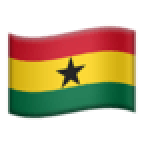The quake hit at 11:23 p.m. local time, striking 49 miles off the island’s northwest coast, the U.S. Geological Survey said, and was followed by a series of smaller aftershocks.
Elmer Román, Puerto Rico’s secretary of public safety, said on Tuesday morning that there were no reports of injuries or any significant damage.
Authorities were already on alert as Tropical Storm Karen loomed to the south of the island, where up to 30,000 survivors of Hurricane Maria are still living under leaky tarps.
With winds likely to hover around 40 mph, Karen bears little resemblance to Maria, which devastated the island two years ago when it was nearly a Category 5 hurricane, with winds of 155 mph. Hurricane Dorian, this season’s only major storm so far, also mostly spared the island.
But National Weather Service officials warned that the destructive potential of Karen should not be underestimated, even at lower wind speeds.
“People are saying, ‘It’s just a tropical storm,’ but there’s no such thing as ‘just a tropical storm,’” said Dennis Feltgen, a meteorologist with the National Hurricane Center in Miami. “Tropical storms can create a lot of havoc.”
In Puerto Rico, emergency managers urged local mayors to prepare for rain, especially on the eastern side of the island and in the island municipalities of Vieques and Culebra, which are between the big island and the U.S. Virgin Islands.
“Let’s prepare for the worst, even though what’s coming is a storm,” Carlos A. Acevedo, director of Puerto Rico’s Bureau for Emergency and Disaster Management, said on Monday.
Roberto García, director of the National Weather Service office in San Juan, the capital, said that the rain could continue in parts of Puerto Rico into Wednesday.
The core of Tropical Storm Karen, which slowed down overnight, is expected to arrive Tuesday afternoon, but the worst rains will hit after the center moves over the island. García said that he would not be surprised if isolated areas in Puerto Rico’s central mountainous region got more than 6 inches of rain. Those conditions could create life-threatening mudslides, officials warned.
Gov. Wanda Vázquez of Puerto Rico said residents should remain indoors in a safe place. If they live in a flood zone, they should seek shelter with friends and relatives, or in public shelters. Thirty-five shelters had opened as of Tuesday morning in some vulnerable communities.
“Be calm,” Vázquez said. “We live in the Caribbean. We can’t help but be exposed to these situations during hurricane season.”
Ferries from the big island to Vieques and Culebra were suspended on Monday evening. Schools and government offices remained closed Tuesday. Vázquez signed an executive order freezing fuel prices to prevent gouging.
Power still goes out — if only briefly — on a regular basis in parts of Puerto Rico, where the electrical grid remains frail. But the public power utility is better prepared to respond to any possible outages than it was during Hurricane Maria in 2017, the governor said.
“That’s a reality — the power may go out,” Vázquez said.
García, the meteorologist, warned about possible storm surge and flash flooding. But he added: “This system is not a Maria.”
An average hurricane season, which lasts from June to November, has 12 named storms, a designation given to storms with winds that reach 39 mph, said Feltgen of the National Hurricane Center. Of those, an average of six become hurricanes, with winds of at least 74 mph, and three become a Category 3 or above, with winds over 111 mph.
This year, 12 storms have been named, four have become hurricanes and one, Dorian, became a Category 5, wreaking catastrophic devastation in the Bahamas.
“We’re pretty close to an average season,” Feltgen said. “But we still have a little more than two months of the hurricane season to go.”
This article originally appeared in
.


&format=jpeg)
&format=jpeg)
&format=jpeg)
&format=jpeg)